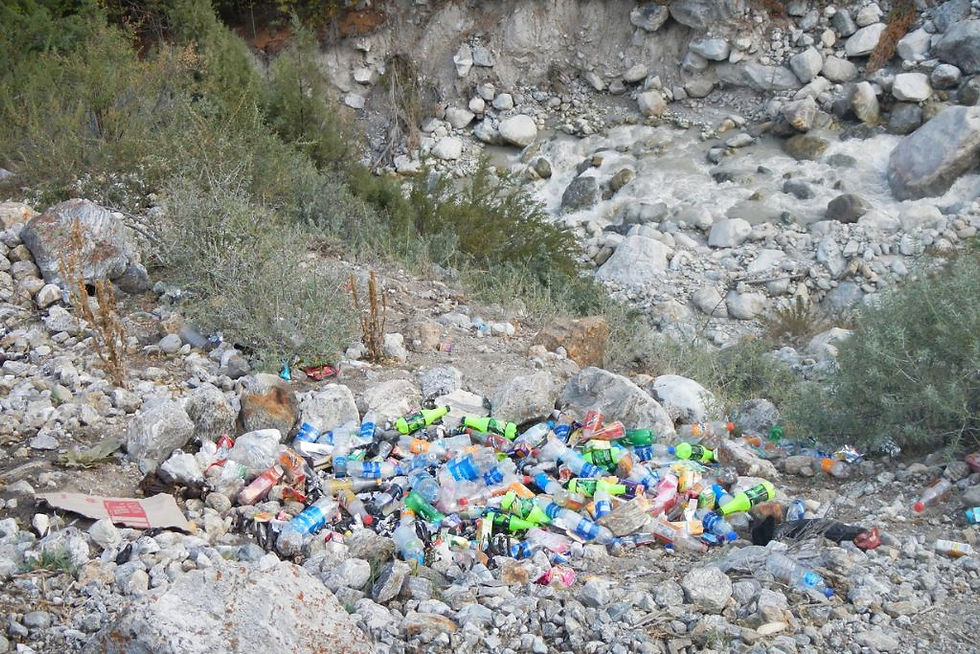Creative Solutions to Supply Land Without Reclamation in Hong Kong
- Constant Tedder
- Aug 2, 2021
- 4 min read
Land reclamation is a popular urban development strategy, particularly for densely-populated cities like Hong Kong. However, land reclamation results in significant, often irreversible damages to its surrounding environment and natural habitats. Researchers are looking for alternatives to create new land without reclamation while meeting greater demands for more public space.
—
Situated on the eastern fringe of the lower estuary of the Pearl River, the third largest river in China, Hong Kong is a well-known port city, and one of the most densely populated cities on Earth with a population of over 7 million people.
The sea surrounding Hong Kong is used for navigation, recreation, aquaculture, fishery, and supplies flushing and cooling water for domestic and industrial uses. With close to 6,000 species of animals recorded, the city’s marine habitats support a high biodiversity ranging from migratory birds to dolphins.
Currently, Hong Kong, Shenzhen and nine other cities in the Pearl River Delta form a megalopolis of over 65 million people, known as the Greater Bay Area. The high rate of urbanisation and infrastructure construction around the delta area pose severe threats to the remaining habitats, including losing bodies of water to land reclamation.
Hong Kong is also famously ranked highest in the world in housing costs. A parking space in a prime location in the city easily costs more than USD 1 million. The constant land shortage combined with immigrants arriving from mainland China have pushed housing prices to an unaffordable level. While the government recognises the housing crisis and has made efforts in developing more public housing, the majority of undeveloped lands in Hong Kong that remain are protected areas with significant ecological values, as well as farmlands and brownfields owned by local villagers and property developers that cost too much to redevelop. The easiest solution for the government is to reclaim the sea.
In 2018, the Hong Kong government announced the “Lantau Tomorrow Vision” plan, which aims to reclaim a large section of the east Lantau sea, creating several artificial islands with bridges and tunnels connecting Lantau Island to Hong Kong Island. This will form a metropolitan area that could house 400,000 households, which approximates around 1 million residents. The proposed reclamation projects received a number of criticisms from both the public and environmental groups, along with studies showing how the reclamation will cause irreversible environmental damages and destroy the natural habitat of Chinese white dolphins, pushing them to the brink of extinction.
Furthermore, there are recent discussions of developing residential properties on the fringes of country parks. The green space surrounding country parks are set as an ecological buffer to protect the sensitive ecosystem of country parks. Building houses in those areas would cause irreversible damage to the ecosystem, lead to fragmentation of habitat and further threaten the wildlife in Hong Kong country parks.
You might also like: The Importance of Land Reclamation in Hong Kong and its Impacts
Can Hong Kong Create Land Without Reclamation?
The Hong Kong government has made research on the different ways to create new land. The city looked into the potentials of cavern development and moving infrastructures such as water treatment plants within, a strategy not unlike the city’s underground transport network MTR and cavern water reservoirs and sewage treatment facilities. This could free up an abundance of land for housing.
Another solution worth exploring is constructing a floating city. This innovative solution does not require land reclamation and the construction process could be carried out off-site and reduce environmental impacts. Small-scale floating islands have proved to be technologically possible. Island nations such as Maldives, which relies heavily on tourism to support their economy, has famously built floating resorts and hotels for tourists. The land in Maldives is scarce and reclamation would destroy their pristine atoll and coral reefs, which are the country’s main attraction for tourism. With rising sea levels, a floating island would have the ability to adapt to changing climates and potential floods.
In the Netherlands, a country that is historically known for land reclamation using polder, has similarly developed a new method of creating new land via flotation. In 2018, the world’s first floating farm started operation in Rotterdam. The floating farm housed 32 cows and is designed to withstand future rising sea levels. The floating farm is designed to have a circular energy system, which produces its own electricity from solar panels and supplies freshwater from a rainwater collection system. The cows can feed on grass mowed from neighbouring playing fields and golf courses, and any manure collected is then turned into organic fertilizer. Put together, the agriculture system aims to balance animal welfare and sustainability.
The utilisation of flotation land doesn’t end there. Since 2011, the Netherlands has begun working on housing projects that float along the canal. Unlike the country’s traditional houseboats, these floating houses are classified as immovable properties with postcode and address. Situated in the Ijburg District in Amsterdam, where house prices are the most expensive, floating houses could make housing more affordable.
The floating city model is no longer a conceptual idea; it has been experimented and proven to be technologically possible. In places such as Hong Kong, where the price of land is exponentially high, floating cities could provide a more economical alternative to accommodate the world’s growing population, conserve the marine environment, as well as offering more sustainable living conditions.
Featured image by: Flickr




Comments